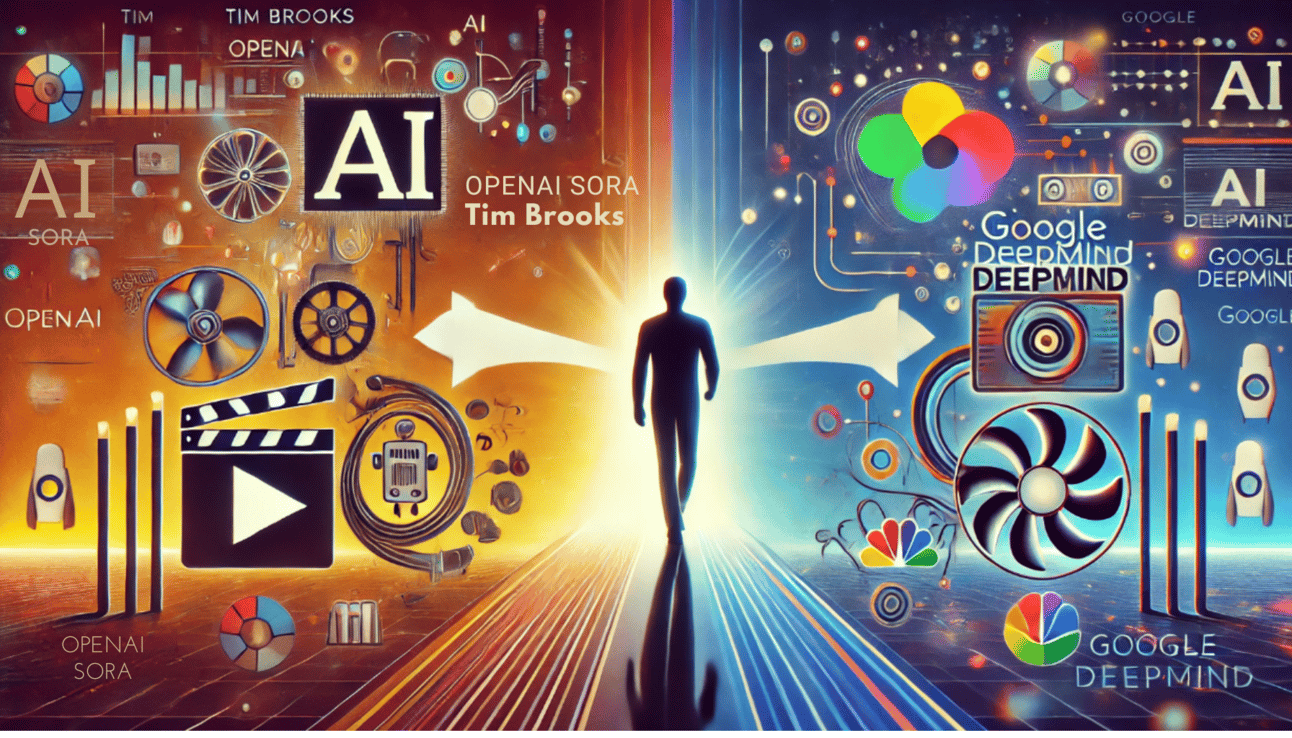
Image Source: ChatGPT-4o
OpenAI's Tim Brooks Departs for Google DeepMind to Lead Video AI
Tim Brooks, one of the co-leads of OpenAI’s video generator project, Sora, has announced his departure from OpenAI to join Google DeepMind, Google's AI research division. Brooks made the announcement via a post on X, revealing his new role at DeepMind where he will work on video generation technologies and “world simulators.”
Google Welcomes Brooks to DeepMind
Google DeepMind’s CEO, Demis Hassabis, welcomed Brooks in a response to the post, stating that Brooks will help bring the concept of a "world simulator" to life. While the term remains somewhat vague, DeepMind has previously applied it to their Genie model, which can generate playable, action-controllable virtual worlds from a range of inputs, including synthesized images, sketches, and real photos.
In a 2023 paper, DeepMind researchers described the potential of a real-world simulator as ranging from controllable content creation in areas like gaming and film to training AI agents in simulated environments that can later be deployed in the real world. This concept underscores the broader vision for AI-generated virtual worlds, where simulated environments could serve practical purposes in various industries, from entertainment to robotics.
Brooks’ Role in Developing Sora at OpenAI
Brooks played a pivotal role in the development of Sora, OpenAI’s highly anticipated video generation tool, which has yet to be publicly released. He was among the first researchers to work on the project, which began in early 2023, and claims to have led the research direction and model training for Sora. His departure is seen as a significant loss for OpenAI, as the company continues to face both technical challenges and stiff competition from rivals like Luma and Runway.
Challenges and Setbacks for Sora
Reports suggest that Sora has faced technical hurdles, particularly in terms of processing speed. Initial versions of the system reportedly took over 10 minutes to generate a 1-minute video clip, putting it behind competitors. OpenAI is currently training an improved version of Sora that could produce clips more efficiently, according to sources.
Rising Competition in AI Video Generation
As OpenAI works to refine Sora, other AI video generation systems are gaining ground. For instance, Google’s own video generation model, Veo, was unveiled at its I/O developer conference earlier this year. Veo will soon be integrated into YouTube Shorts, allowing creators to generate backgrounds and six-second video clips. Meanwhile, competitors like Runway and Stability AI are securing valuable partnerships, including Runway’s deal with Lionsgate and Stability AI’s recruitment of renowned filmmaker James Cameron to its board. Despite its advancements, OpenAI has not yet secured a long-term collaboration with a major production studio.
High-Profile Departures from OpenAI
Brooks' exit is the latest in a series of high-profile departures from OpenAI in recent months. These include former CTO Mira Murati, chief research officer Bob McGrew, and research VP Barret Zoph, all of whom resigned in late September. Additionally, co-founder and former chief scientist Ilya Sutskever, prominent research scientist Andrej Karpathy, and ex-safety leader Jan Leike have also left the company. Brooks, in an interesting twist, is returning to Google, where he previously worked on the company’s Pixel phones.
What This Means for AI Video Generation
Tim Brooks’ move from OpenAI to Google DeepMind highlights the growing competition in the AI video generation field. As Brooks brings his expertise in developing Sora to DeepMind, this could accelerate Google’s advancements in video generation technologies, including its Veo model. With industry giants like Google and OpenAI competing to lead the next wave of AI-driven video innovation, we could see rapid progress in applications ranging from content creation for films and games to real-world simulations and virtual environments.

